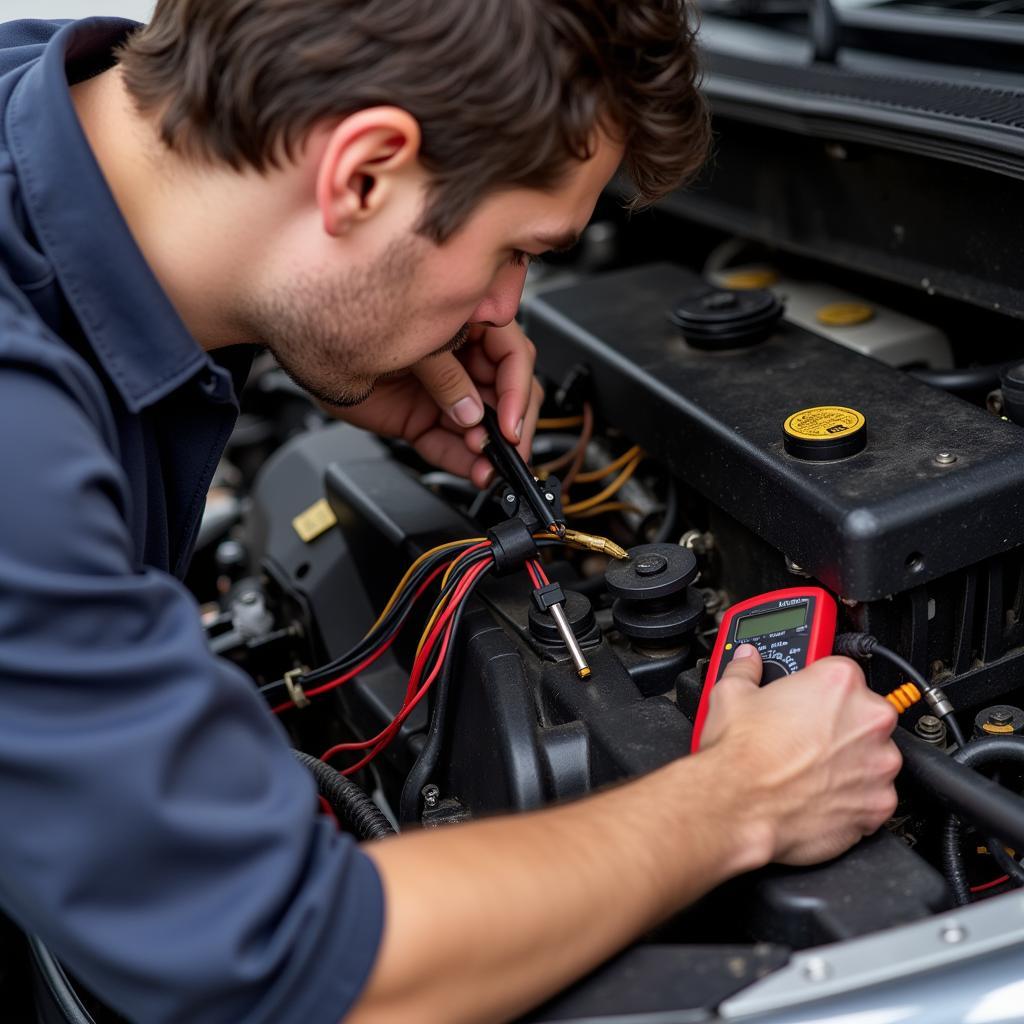Your cart is currently empty!

Deciphering U1017 Ross-Tech: A Comprehensive Guide to Lost Communication
The dreaded U1017 Ross-Tech code. It pops up, and suddenly you’re facing a wall of frustration, wondering what’s wrong with your car. This guide dives deep into the U1017 fault code, providing you with the knowledge and tools to diagnose and fix this common communication breakdown. We’ll explore the causes, symptoms, and solutions, empowering you to take control and get your vehicle back on the road.
Understanding the U1017 Ross-Tech Fault Code
The U1017 code, as identified by Ross-Tech’s VCDS software, signifies a loss of communication with a control module. Your car is a network of interconnected computers, constantly exchanging data. When one module can’t talk to the others, it throws a wrench in the works, often resulting in drivability issues or warning lights. This can affect various systems, from the engine and transmission to the ABS and airbags.
What Causes the U1017 Error?
The U1017 error can stem from several issues, including wiring problems, faulty modules, or even a low car battery. Identifying the root cause is crucial for effective repair. Common culprits include:
- Wiring Harness Issues: Damaged, corroded, or loose wiring can interrupt communication between modules.
- Faulty Control Module: A malfunctioning module itself can fail to communicate or send incorrect signals.
- Low Battery Voltage: Insufficient voltage can disrupt the sensitive electronics within the control modules.
- Software Glitches: Occasionally, a software bug within a module can cause communication errors.
 U1017 Ross-Tech Wiring Harness Inspection
U1017 Ross-Tech Wiring Harness Inspection
Symptoms of a U1017 Code
The symptoms associated with a U1017 code can vary depending on the affected module. Some common signs include:
- Check Engine Light: This is a frequent indicator of a communication issue.
- Erratic Vehicle Behavior: Stalling, rough idling, or loss of power can occur.
- Malfunctioning Systems: Problems with specific systems, such as the ABS or transmission, may arise.
- Diagnostic Trouble Codes (DTCs): Other codes related to the affected module may appear alongside the U1017.
Diagnosing and Fixing the U1017 Ross-Tech Code
Diagnosing the U1017 code requires a systematic approach. Using Ross-Tech’s VCDS software is a powerful tool for pinpointing the source of the problem.
- Scan for Fault Codes: Use VCDS to retrieve all stored DTCs. This provides valuable insight into the affected systems.
- Check Wiring and Connections: Inspect the wiring harness for damage, corrosion, or loose connections, especially around the affected module.
- Test Module Communication: Use VCDS to test the communication with the suspected module. This helps determine if the module itself is faulty.
- Check Battery Voltage: Ensure the battery is fully charged and providing sufficient voltage.
- Update Software (if applicable): Check for software updates for the affected module using VCDS.
 U1017 Ross-Tech VCDS Scan
U1017 Ross-Tech VCDS Scan
“When dealing with U1017, a systematic diagnostic approach is key,” says automotive electrical specialist, John Miller. “Start with the basics, like checking wiring and battery voltage, before diving into more complex module testing.”
DIY vs. Professional Repair
While some U1017 issues can be tackled by experienced DIYers, others require professional expertise. If you’re comfortable with automotive electrical systems and have access to VCDS, you can attempt basic troubleshooting. However, if the problem involves complex wiring or module replacement, seeking professional help is recommended.
“Don’t underestimate the complexity of automotive electronics,” adds Maria Sanchez, an experienced auto technician. “If you’re unsure about any step of the diagnostic process, it’s best to consult a qualified technician.”
Conclusion: Conquering the U1017 Ross-Tech Challenge
The U1017 Ross-Tech code, though daunting at first, can be effectively diagnosed and resolved with the right approach. By understanding the potential causes, symptoms, and utilizing the powerful diagnostic capabilities of VCDS, you can regain control over your vehicle. Remember, a systematic approach and a bit of patience can go a long way in overcoming this common communication breakdown. For further assistance or specialized tools, connect with us at VCDStool at +1 (641) 206-8880 and our email address: vcdstool@gmail.com or visit our office at 6719 W 70th Ave, Arvada, CO 80003, USA.
by
Tags:
Leave a Reply